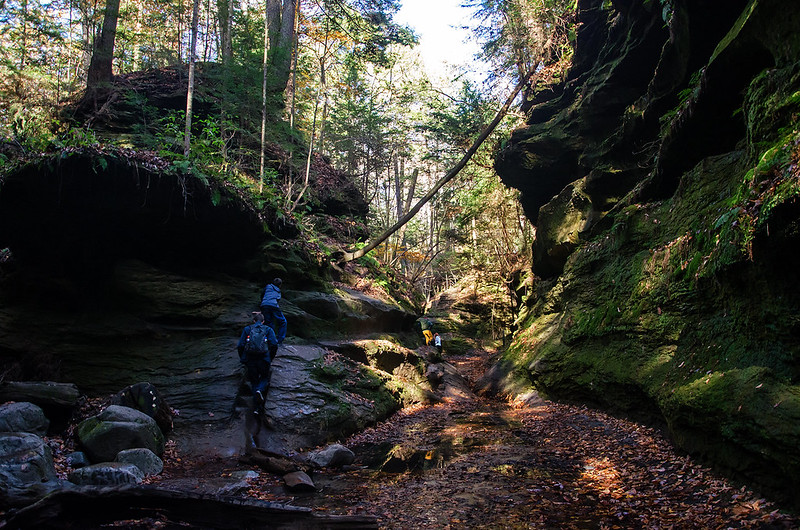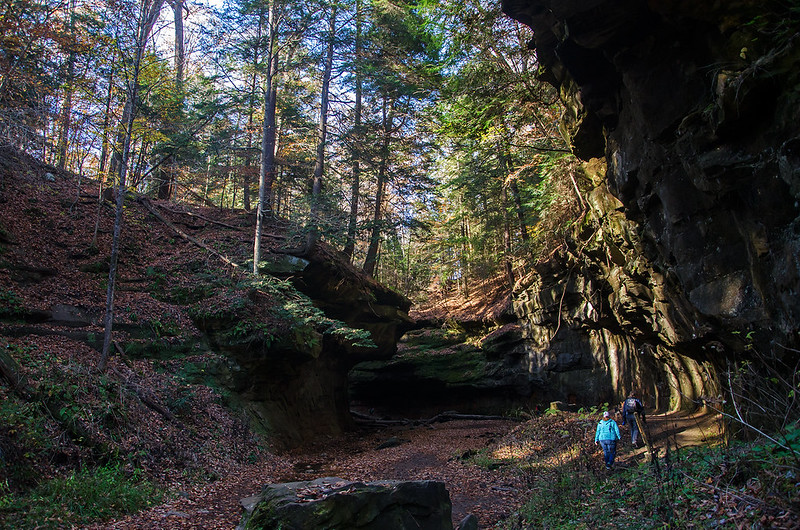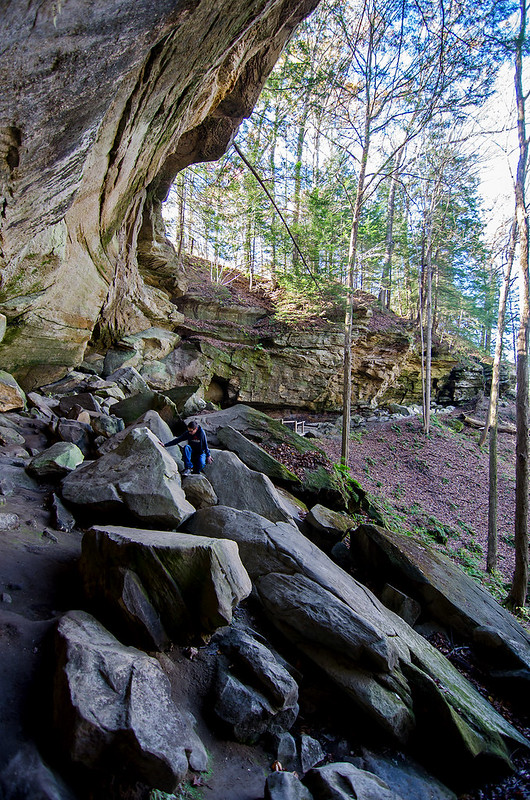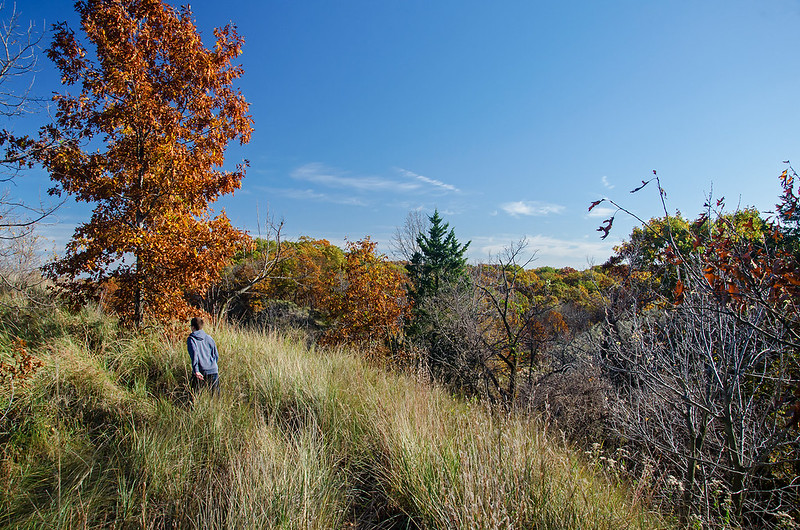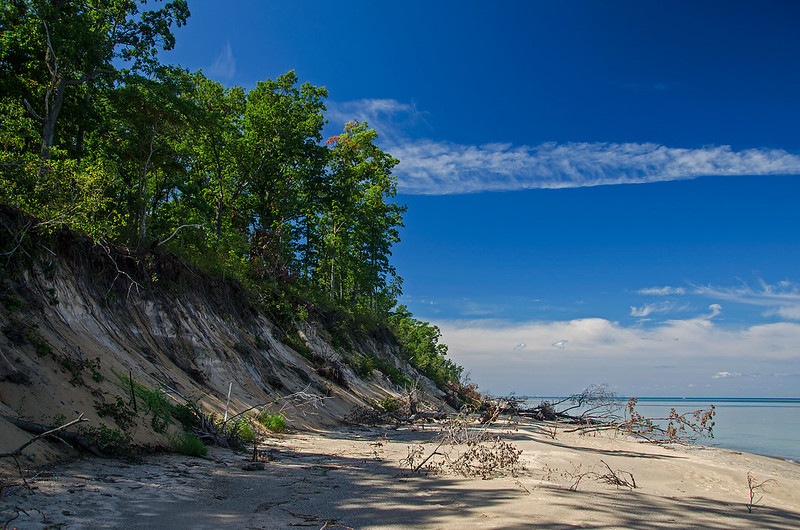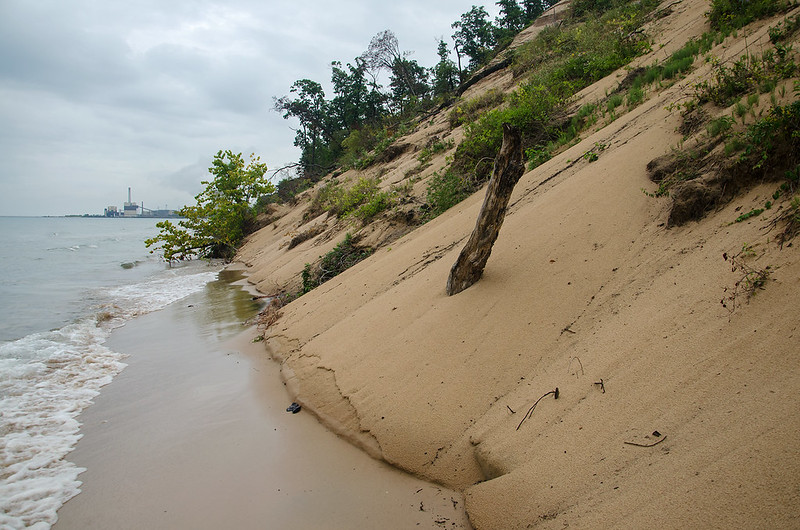
Following a long hike down a forgotten road covered in a foot of fallen leaves, we reached the overlook. At one time, this road lead to an area where visitors could park and take in the view of Lake Michigan from high above the 80 foot tall dune. Sunsets were amazing from this spot, with the city of Chicago's skyline on the horizon over Lake Michigan.
Now, much of this area is off limits to hiking - at least from the beach, where foot traffic is said to cause erosion of the dunes. The waves of Lake Michigan have completely proven that to be false, as all of the paths that were once on this dune have washed away - and not because of foot traffic.
We followed the old road quite a distance to see this overlook for the first time in many years. Walking on broken asphalt, we certainly did not contribute to any "foot traffic erosion." The boys immediately climbed up onto the fallen trees, uprooted by the Lake Michigan waves stealing sand from the bottom of the dunes. The dunes have been collapsing over the years, and will continue to do so until they reach an equilibrium with the lake. This has taken place for thousands of years, and banning foot traffic will do nothing to stop it.

The road was barely visible, covered in a thick layer of leaves, branches, and plants that are beginning to take hold. We could see evidence of old homes - some bricks, driveways, and garden plants that were not native to the area placed in clusters by homeowners decades ago.
We crossed this road dozens of times in the past, as we followed the paths on the dune ridge that ran parallel to the beach, but never ventured onto it. With the paths long gone, and the no foot traffic warnings on the dunes, we avoided the area for years. It was great to get to this spot again to see the changes, and to take in the view of Lake Michigan once again.





